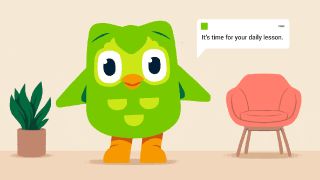Learning languages in schools comes in many different forms. In pre-kindergarten and elementary classes, there are often translated words at centers around the room. In middle and high school, students often have the opportunity to choose a language as an elective. Bilingual schools and classrooms also integrate foreign languages into daily instruction.
Regardless of the format in which language is being introduced, Duolingo offers an exciting technology-based platform for students to improve their foreign language skills. Thanks to the game-based format of Duolingo, students will be encouraged to continue to use the app.
For more information on Duolingo, check out What is Duolingo and How Does it Work? Tips and Tricks.
This sample lesson plan is focused on using Duolingo to support students' development of their foreign language skills.
Subject: Foreign Languages
Topics: Vocabulary and Conversational Phrases
Grade Band: Middle School
Learning Objective: At the end of this lesson, students will be able to:
- Identify at least 10 vocabulary words in a foreign language
- Speak at least 3 conversational phrases
Setting Up Duolingo For The Class
Create an introduction to Duolingo with Google Slides and screenshots so students can get a sense of how you want them to engage with the app. With the free teacher account, you can set up a class for your students and all of their interactions within Duolingo will be connected.
Once you have set-up a classroom and added your students, create an assignment, which is an easy automated process in the Duolingo teacher site. The assignments are a combination of the interactive activities within the app, such as listening to stories, practicing conversational phrases, and matching what is heard to what is written. You must also choose how long you want students to engage in the app, which will dictate how long each unit takes to complete.
Add the link to your class Duolingo to your LMS, and your students can quickly go into the assignment. Students will be prompted in English first, then can move through the different language learning activities.
Be sure that students have headphones so they do not get distracted with other students’ engagement with Duolingo. If you choose to have students repeat words and phrases, try to space them out in the classroom as much as possible.
You will also be able to monitor student progress and see what areas they need more support in through the analytics through reports that Duolingo provides.
Connecting to Other Lessons
Instead of having students go through random modules to improve their foreign language speaking and listening skills, you may want to connect the lesson to other lessons students are engaged with. For example, with a Google Earth Social Studies lesson focused on landforms, students can choose a language that is connected to the country where the landform was located to learn related vocabulary. Or with a Storybird Writing lesson focused on fictional storytelling, students can try to use learned foreign language conversational sentences within the story.
Duolingo Support for Teachers?
Duolingo offers a wide range of support for teachers as you incorporate the use of the app into your lessons, including activity templates, a guidebook, and a robust help center.
If you would like to connect with other teachers for peer support, there is a Duolingo Educators Facebook group, for which the link is available on the Duolingo site.
What if Students Are On Different Ability Levels?
The great thing about Duolingo is that the content is offered at the introductory, beginner, intermediate, and advanced levels.
If you have students who need more time with the concepts, have them repeat modules before moving on to more difficult ones. For students whose language skills are more developed, encourage them to move on to more advanced modules. Also, because you will set-up the lesson by time, a student who is more advanced can easily move on to other concepts while students who need more time work on their items.
Duolingo is a fun learning tool that can be used for students to start or build their language experiences. Give it a try and see how your students’ develop their language skills.

